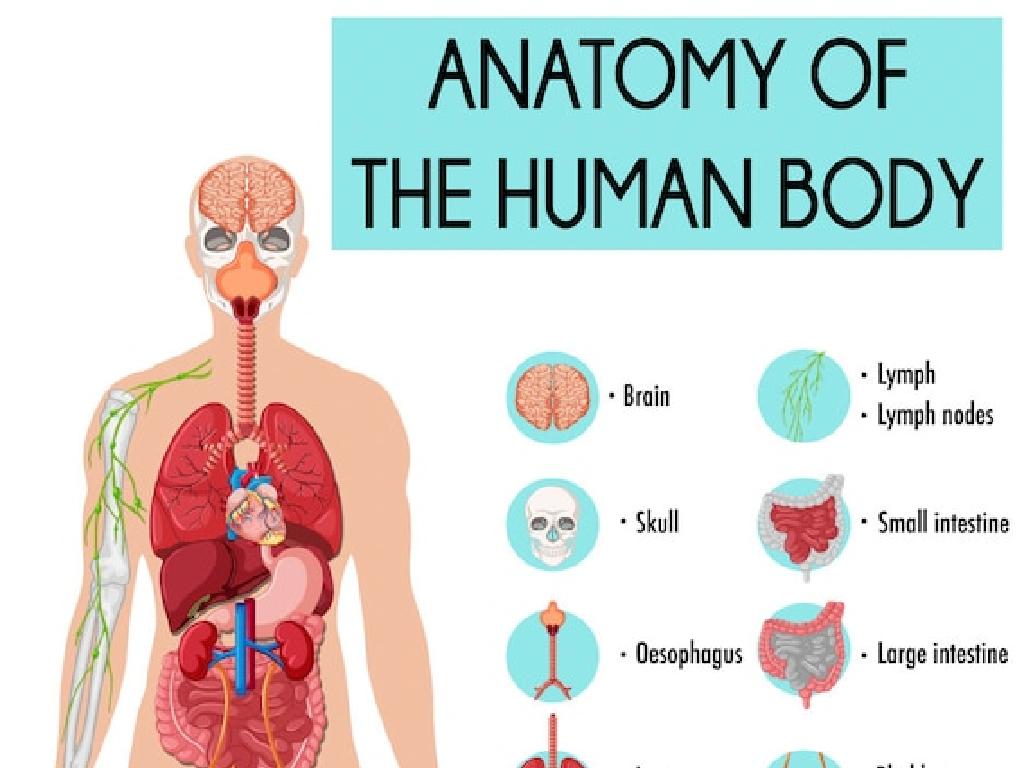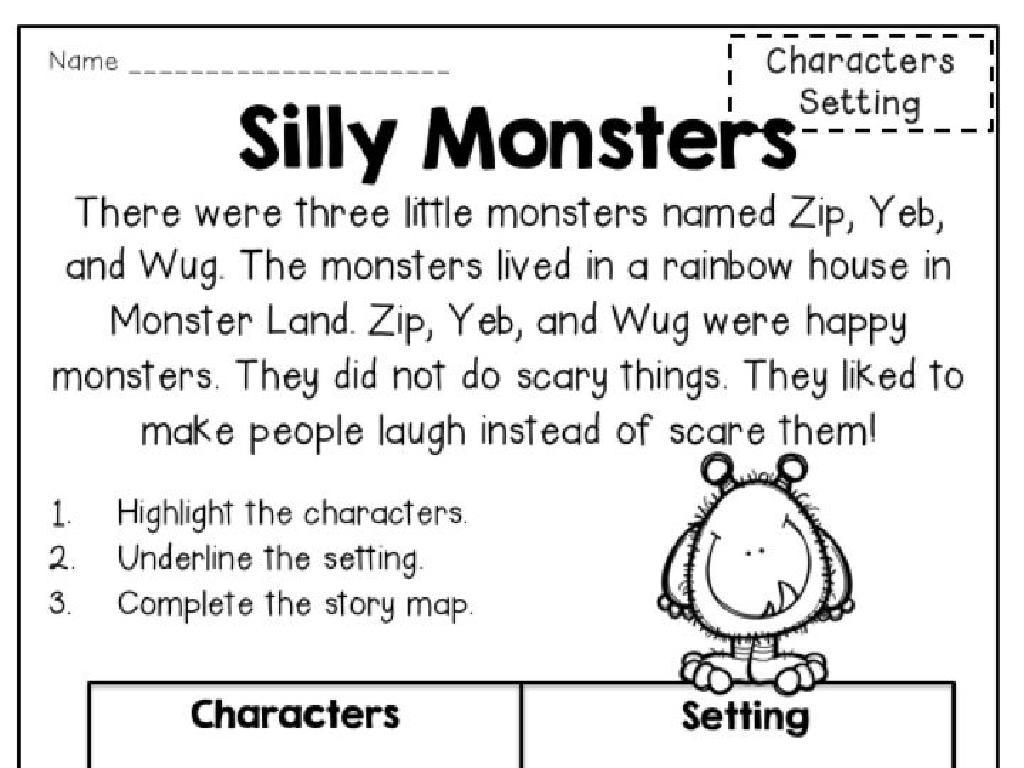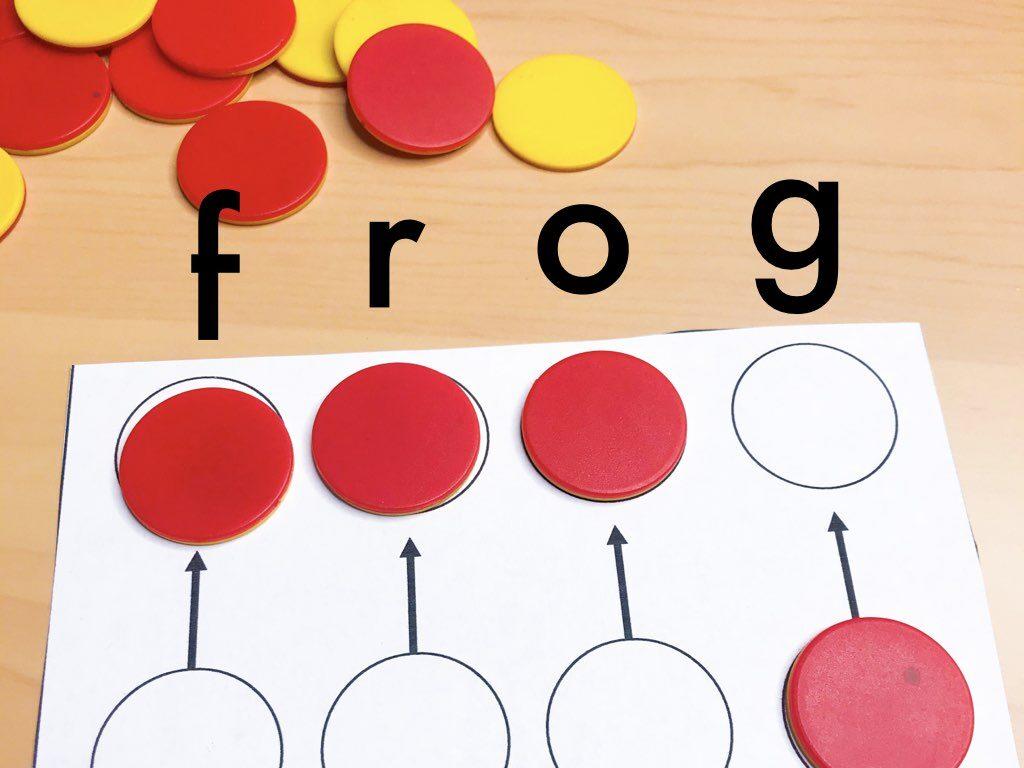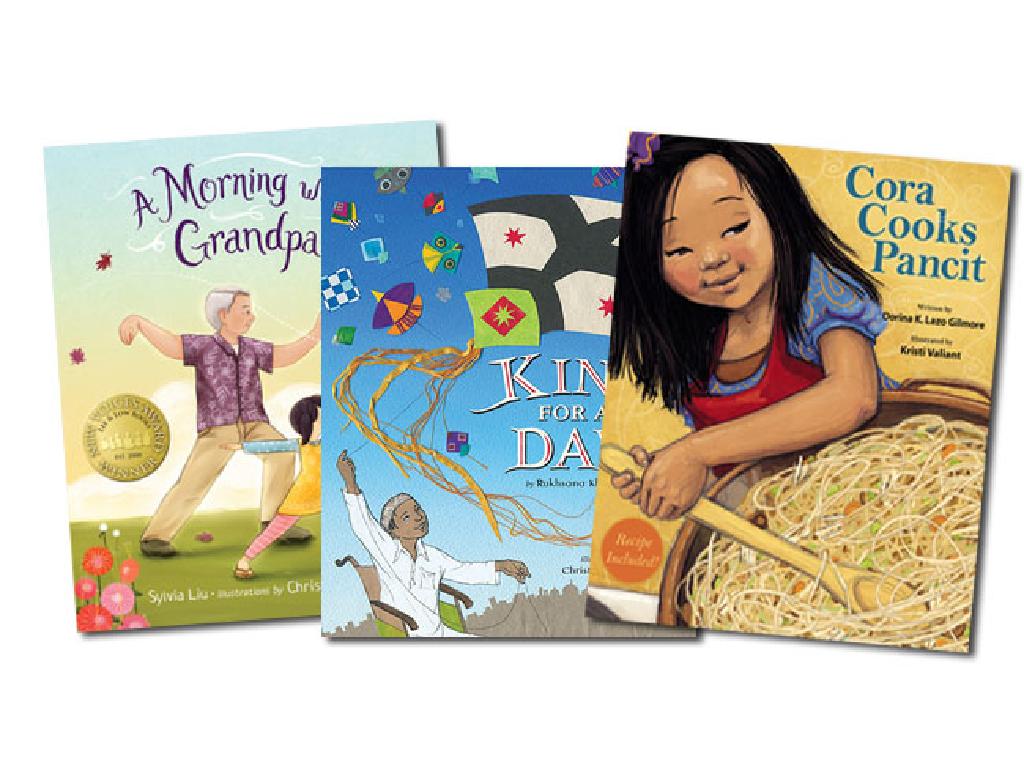Choose The Picture That Rhymes With The Word
Subject: Language arts
Grade: Kindergarten
Topic: Rhyming
Please LOG IN to download the presentation. Access is available to registered users only.
View More Content
Welcome to Rhyming Words!
– Greet our class with a big smile
– Today’s fun topic: Rhyming Words
– What are rhyming words?
– Words that sound the same at the end
– Examples: ‘cat’ rhymes with ‘hat’
– ‘Bat’ and ‘mat’ also rhyme with ‘cat’
|
Begin the class with a warm and enthusiastic greeting to set a positive tone. Introduce the concept of rhyming words in a way that is engaging and easy to understand for Kindergarten students. Explain that rhyming words are words that have the same ending sound. Use simple and familiar examples like ‘cat’ and ‘hat’ to illustrate the concept. Emphasize the sounds of the words to help students hear the rhyme. Encourage the children to think of other words that rhyme with ‘cat’ and ‘hat’ to get them actively participating. This will help them understand the concept of rhyming and prepare them for the activities ahead.
What is Rhyming?
– Rhyming words end the same way
– Examples: ‘dog’ and ‘frog’
– Both have the ‘og’ sound at the end
– ‘bee’ and ‘tree’ also rhyme
– Both end with the ‘ee’ sound
– Use claps to find rhymes!
– Clap when you hear words that sound the same
|
Introduce the concept of rhyming by defining rhyming words as those that have the same ending sound. Use simple, clear examples like ‘dog’ and ‘frog’, ‘bee’ and ‘tree’ to illustrate the concept. Encourage the children to listen for the sounds at the end of the words that are the same. Incorporate hand motions or clapping to engage the students and to help them physically emphasize the rhyming parts of the words. This kinesthetic activity will help reinforce their understanding of rhyming words. During the presentation, pause after each example to give the students a chance to clap along and say the words out loud.
Listening to Rhymes: Find the Pair
– Listen to a fun rhyme or song
– Clap when you hear words that sound the same
– Words like ‘cat’ and ‘hat’ rhyme, so clap when you hear these!
– Talk about the rhyming words
– Which words made the same sounds at the end?
– Understanding rhyme through music
– Rhymes are words that have the same ending sound
|
This slide is for a class activity focused on developing the ability to recognize rhyming words through listening. Play a short, engaging rhyme or song for the children and instruct them to clap whenever they hear words that rhyme. This interactive approach helps children to actively listen and identify rhyming patterns. After the song, have a discussion about the words that rhymed and why. This activity not only reinforces the concept of rhyming but also enhances listening skills. Possible songs include ‘Twinkle, Twinkle, Little Star’ or ‘The Wheels on the Bus’. Encourage the children to express which words they found to rhyme and guide them towards understanding that rhyming words have the same ending sounds.
Matching Rhyming Pictures
– Identify objects in pictures
– Understand rhyming pictures
– Rhyming words have the same ending sounds
– Match pictures that rhyme
– Show how cat and hat rhyme through pictures
– Practice with examples
– Use pictures of a cat, hat, bat, and mat for practice
|
This slide is designed to introduce kindergarteners to the concept of rhyming using visual aids. Start by showing pictures of familiar objects and asking the children to identify them to ensure they recognize the objects. Next, explain that some words sound similar at the end, which means they rhyme, and these can be represented by pictures. Demonstrate by matching pictures that rhyme, such as a cat and a hat. Use clear, simple examples and encourage the children to participate by choosing which pictures rhyme from a given set. This interactive activity helps them develop phonemic awareness, an essential skill in early reading development. Make sure to praise their efforts and correct gently, reinforcing the learning experience.
Rhyme Time: Matching Words with Pictures
– Hear a word from the teacher
– Look at three different pictures
– Pick the picture that rhymes
– If ‘cat’ is the word, find the picture of a ‘hat’.
– Practice with more words
– We’ll try with ‘dog’, ‘log’, and ‘frog’ next!
|
This slide is for a fun and interactive class activity that helps Kindergarten students understand and identify rhyming words. Start by saying a word out loud and showing the children three pictures. One of the pictures should rhyme with the word you said. Encourage the children to choose the picture that rhymes with the given word. For example, if the word is ‘cat’, the rhyming picture might be a ‘hat’. Repeat the activity with different sets of words and pictures to reinforce the concept. Possible words and pictures for the activity: 1) ‘Sun’ – ‘Bun’, ‘Pen’, ‘Fan’ 2) ‘Tree’ – ‘Bee’, ‘Car’, ‘Book’ 3) ‘Fox’ – ‘Box’, ‘Pig’, ‘Ball’. This exercise will help students develop phonemic awareness and listening skills.
Rhyming Word Pairs
– Introduce rhyming picture pairs
– Show pictures that rhyme, like ‘cat’ and ‘hat’
– Say names of objects aloud
– Everyone together, ‘cat, hat, bat, mat’ – hear the rhyme?
– Listen for rhyming sounds
– Hear the ending sound? That’s the rhyme!
– Find and match rhymes
– Which pictures sound the same at the end?
|
This slide is aimed at helping Kindergarten students recognize and match rhyming words through pictures. Start by showing them pairs of pictures that rhyme and ask them to say the names of the objects out loud. This will help them to hear the rhyming sounds. Encourage active listening for the sounds that make the words rhyme, focusing on the ending sounds. Then, have the students find and match the pictures that rhyme. Activities can include rhyming games, where students pick out rhyming pairs from a selection of pictures, or a rhyming scavenger hunt where they find objects in the classroom that rhyme with a given word.
Rhyming Memory Game
– Learn the Memory Game rules
– We match cards that rhyme like ‘cat’ and ‘hat’
– Split into groups for the game
– Each group gets cards to play with
– Find pairs of rhyming pictures
– Look for two pictures that sound alike
– Take turns and have fun!
|
This slide introduces a class activity designed to help Kindergarten students understand and practice rhyming. The memory game involves picture cards that the children will use to find rhyming pairs. Explain the rules clearly: flip two cards at a time to find a pair that rhymes. Divide the class into small groups and give each group a set of rhyming picture cards. Encourage the children to take turns flipping the cards, trying to remember the positions and find matching rhymes. This activity promotes listening skills, memory, and phonological awareness. Possible rhyming pairs could be ‘dog’ and ‘frog’, ‘cat’ and ‘hat’, ‘bee’ and ‘tree’, ‘duck’ and ‘truck’. Make sure to walk around and assist groups as needed, and encourage the children to help each other and discuss the rhymes they find.
Rhyming Review and Cheer
– Review today’s rhymes
– Let’s recall the rhyming words we learned
– Celebrate our rhyme time
– Great job finding rhymes!
– Rhymes in songs and stories
– Listen for rhymes when you sing or read
– Keep listening for rhymes
|
This slide is meant to wrap up the lesson on rhyming words. Start by revisiting the words that the class learned to rhyme today, perhaps by showing pictures and repeating the rhymes together. Offer praise to the children to acknowledge their hard work and participation throughout the lesson. Encourage them to continue their learning outside of the classroom by listening for rhyming words in songs and stories they hear at home. This will help reinforce their understanding of rhymes and make the learning experience more holistic and continuous.






